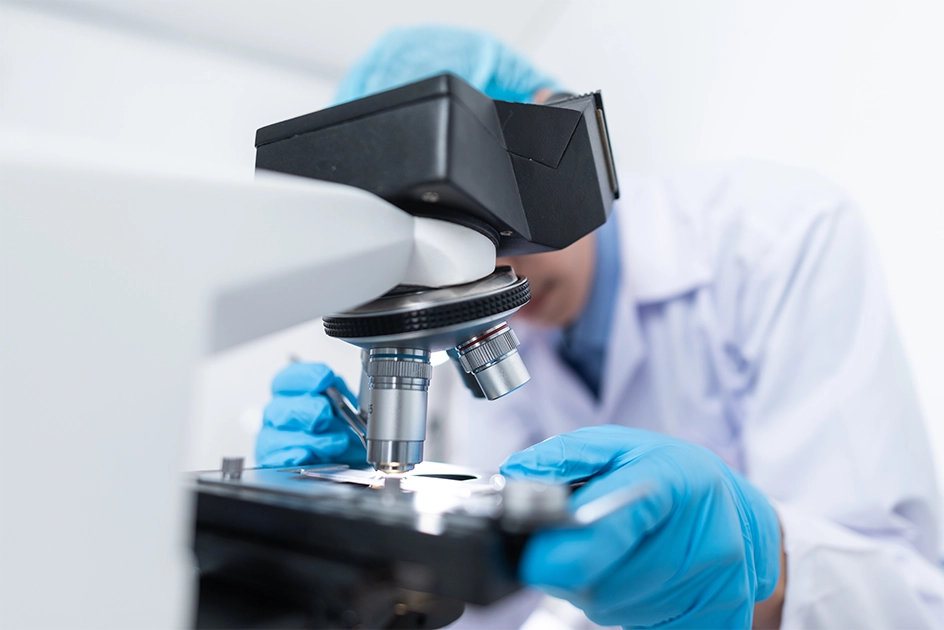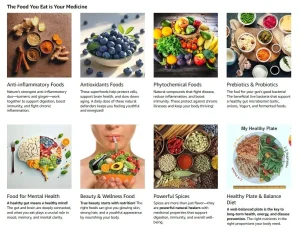Here we discuss mechanisms by which the following factors cause disease;
1. Climate change
2. Toxicity of chemical and physical agents
3. Environmental pollution
4. Effects of alcohol
5. Effects of tobacco
6. Injury caused by therapeutic drugs & drug abuse
Although there are pathogens i.e., viruses, bacteria, and other microorganisms that cause various diseases in human beings, not all the time disease is caused by pathogens. Some of the very common factors other than pathogens that contribute to some diseases are explained in the upcoming discussion.
1. Diseases caused by climate change
The direct and indirect effects of climate change on human health are becoming increasingly obvious. Direct effects include exposure to extreme weather events such as heat waves. Indirect effects include disruption to economic and social activity, which can impact health.
Climate change affects many of the social and environmental determinants of health – clean air, safe drinking water, sufficient food, and secure shelter.
Some diseases are worsened by climate change. It exacerbates existing inequalities and challenges in managing infectious diseases. Some of the diseases that are Infectious diseases whose transmission can be impacted by climate change include dengue fever, malaria, leishmaniasis, Ebola, Tuberculosis, and, other respiratory diseases.
Allergic Reactions
Climate change will potentially lead to both higher pollen concentrations and longer pollen seasons, causing more people to suffer more health effects from pollen and other allergens. Pollen exposure can trigger various allergic reactions, including symptoms of hay fever.
Hay fever, also known as allergic rhinitis, occurs when allergens like pollen enter your body and your immune system mistakenly identifies them as a threat. If you have allergic rhinitis, your body then responds to the allergen by releasing chemicals that can cause symptoms in the nose.
Allergic conjunctivitis is the inflammation of the lining of the eye (conjunctiva) due to exposure to allergens like those in pollen. Allergic conjunctivitis is found in up to 30% of the general population and as many as 7 out of 10 patients with allergic rhinitis.
People with respiratory illnesses like asthma may be more sensitive to pollen. Exposure to pollen has been linked to asthma attacks and increases in hospital admissions for respiratory illness.
The shift of precipitation patterns and behaviors
Climate change will potentially lead to shifts in precipitation patterns, warmer seasonal air temperatures, and more carbon dioxide (CO2) in the atmosphere which also affects health to a greater extent.
Climate change can also aid in behavior change and mental health, one may feel better and work at full capacity in normal weather as compared to one who is suffering from cold or hot temperatures weather.
2. Toxicity of physical and chemical agents
A toxic agent is anything that can produce an adverse biological effect. It may be chemical, physical, or biological in form. Toxic agents may be chemical (such as cyanide), physical (such as radiation), or biological (such as snake venom).
There are various diseases caused by chemical and physical toxic agents. Although there is a separate subject for the study of toxic substances in the medical field called toxicology some of the major toxic substances are explained here below with their mechanisms of action.
Chemical toxic agents
Hazardous chemicals can act directly on the skin, resulting in local irritation or an allergic reaction, or they may be absorbed through the skin, ingested, or inhaled. In the workplace ingestion of toxic chemicals is usually accidental and most commonly results from handling contaminated food, drink, or cigarettes.
The wide range of both naturally occurring and synthetic chemical compounds that can give rise to adverse health effects can be roughly organized into four major categories:
- Gases
- Metals
- Organic compounds
- Dust
Physical toxic agents
Some physical agents contribute to the diseases, some of them are; Temperature, Pressure, vibration, mechanical stresses, and some radiation.
When working in a hot environment, humans maintain normal body temperature by perspiring and by increasing the blood flow to the surface of the body. The large amounts of water and salt lost in perspiration then need to be replaced. In the past, miners who perspired profusely and drank water to relieve their thirst experienced intense muscular pain—a condition known as miners’ cramps because of restoring their water but not their salt balance. When salt in the requisite amount was added to their drinks, workers no longer developed miners’ cramps.
Heatstroke, a more serious and sometimes lethal condition, results when prolonged exposure to heat and high humidity prevents efficient perspiration (by preventing evaporation of sweat), causing the body temperature to rise above 106° F (41° C) and the skin to feel hot and dry.
Working in cold environments may also have serious adverse effects. Tissue damage that does not involve freezing can cause inflammatory swelling known as chilblains. Frostbite, or the freezing of tissue, can lead to gangrene and the loss of fingers or toes. If exposure is prolonged and conditions (such as wet or tight clothing) encourage heat loss, hypothermia, a critical fall in body temperature, may result. When body temperature falls below 95° F (35° C), physiological processes are slowed, consciousness is impaired, and coma, cardiorespiratory failure, and death may ensue.
Atmospheric pressure
Decompression sickness (caisson disease) can result from exposure to high or low atmospheric pressure. Under increased atmospheric pressure (such as that experienced by deep-sea divers or tunnel workers), fat-soluble nitrogen gas dissolves in the body fluids and tissues. During decompression, the gas comes out of the solution and, if decompression is rapid, forms bubbles in the tissues.
These bubbles cause pains in the limbs (known as the bends), breathlessness, angina, headache, dizziness, collapse, coma, and in some cases death. Similarly, the gases in solution in the body tissues under normal atmospheric pressure form bubbles when pressure rapidly decreases, as when aviators in unpressurized aircraft ascend to high altitudes too quickly.
Emergency treatment of decompression sickness consists of rapid recompression in a compression chamber with gradual subsequent decompression. The condition can be prevented by allowing sufficient decompression time for the excess nitrogen gas to be expelled naturally.
“Read more on Health“

Vibration
Whole-body vibration is experienced in surface and air transport, with motion sickness its most familiar effect. A more serious disorder, known as Raynaud’s syndrome or vibration white finger (VWF), can result from the extensive use of vibratory hand tools, especially in cold weather. The condition is seen most frequently among workers who handle chainsaws, grinders, pneumatic drills, hammers, and chisels. Forestry workers in cold climates are particularly at risk. Initial signs of VWF are tingling and numbness of the fingers, followed by intermittent blanching; redness and pain occur in the recovery stage. In a minority of cases, the tissues, bones, and joints affected by the vibration may develop abnormalities; even gangrene may develop. VWF can be prevented by using properly designed tools, avoiding prolonged use of vibrating tools, and keeping the hands warm in cold weather.
Other mechanical stresses
Muscle cramps often afflict workers engaged in heavy manual labor as well as typists, pianists, and others who frequently use rapid, repetitive movements of the hand or forearm. Tenosynovitis, a condition in which the sheath enclosing a tendon to the wrist or one of the fingers becomes inflamed, causing pain and temporary disability, can also result from prolonged repetitive movement.
Ionizing radiation
Ionizing radiation damages or destroys body tissues by breaking down the molecules in the tissues into positively or negatively charged particles called ions.
Radiation that can cause ionization may be electromagnetic (X-rays and gamma rays) or particulate (radiation of electrons, protons, neutrons, alpha particles, and other subatomic particles) and has many uses in industry, medicine, and scientific research.
Nonionizing radiation
Nonionizing forms of radiation include electromagnetic radiation in the radio frequency, infrared, visible light, and ultraviolet ranges. Exposure to radiation in the radio frequency range occurs in the telecommunications industry and the use of microwaves.
Microwaves produce localized heating of tissues that may be intense and dangerous. Various other disorders, mainly of a subjective nature, have been reported in workers exposed to this frequency range. Infrared radiation can be felt as heat and is commonly used in industry in drying or baking processes. Prolonged exposure to radiation can result in severe damage to the skin and especially to the lens of the eye, where cataracts may be produced.
3. Environmental pollution
The addition of any substance (solid, liquid, or gas) or any form of energy (such as heat, sound, or radioactivity) to the environment at a rate faster than it can be dispersed, diluted, decomposed, recycled, or stored in some harmless form. The major kinds of pollution, usually classified by the environment, are air pollution, water pollution, and land pollution.
Modern society is also concerned about specific types of pollutants, such as noise pollution, light pollution, and plastic pollution. Pollution of all kinds can have negative effects on the environment and wildlife and especially on human health and well-being. All types of pollution cause various human diseases, some of them are explained as under.
Diseases Caused by Air Pollution
Diseases caused by air pollutants kill and hospitalize millions of people every year. Estimates by the World Health Organization imply that one out of every eight deaths in the world is due to conditions associated with air pollution.
The most common diseases caused by air pollution include ischemic heart disease, stroke, chronic obstructive pulmonary disease (COPD), lung cancer, and acute lower respiratory infections in children.
Diseases caused by water pollution
Contaminated water can harbor bacteria, such as those responsible for diarrhea, cholera, dysentery, typhoid, hepatitis A, and polio.
According to the UN, every year, approximately 297,000 children under five die from diseases linked to poor sanitation, poor hygiene, or unsafe drinking water. Chemical pollutants, such as pesticides, fertilizers, and heavy metals can cause serious health problems if present in the drinking water and ingested.
In the same way, if toxic chemicals are present in the soil and that soil is consumed for agricultural purposes, can lead to various dangerous diseases as discussed above.
4. Effects of Alcohol on the body
Alcohol produces short and long-term adverse effects on the body, the diseases caused by alcohol are in the hundreds and may be acute to chronic. Long-Term Health Risks.
Over time, excessive alcohol use can lead to the development of chronic diseases and other serious problems including High blood pressure, heart disease, stroke, liver disease, and digestive problems. Cancer of the breast, mouth, throat, esophagus, voice box, liver, colon, and rectum.
Digestive and endocrine glands damage
Drinking too much alcohol can cause abnormal activation of digestive enzymes produced by the pancreas. The buildup of these enzymes can lead to inflammation known as pancreatitis. Pancreatitis can become a long-term condition and cause serious complications.
Inflammatory damage
The liver is an organ that helps break down and remove harmful substances from your body, including alcohol. Long-term alcohol use interferes with this process. It also increases your risk for chronic liver inflammation and liver disease.
The scarring caused by this inflammation is known as cirrhosis. The formation of scar tissue destroys the liver. As the liver becomes increasingly damaged, it has a harder time removing toxic substances from your body.
Sugar levels
The pancreas helps regulate your body’s insulin use and response to glucose. When your pancreas and liver aren’t functioning properly, you run the risk of experiencing low blood sugar, or hypoglycemia. A damaged pancreas may also prevent the body from producing enough insulin to utilize sugar. This can lead to hyperglycemia or too much sugar in the blood.
If your body can’t manage and balance your blood sugar levels, you may experience greater complications and side effects related to diabetes.
Central nervous system
One of the easiest ways to understand alcohol’s impact on your body is by understanding how it affects your central nervous system. Slurred speech is one of the first signs you’ve had too much to drink. Alcohol can reduce communication between your brain and your body. This makes coordination more difficult.
Dependency
Some people who drink heavily may develop a physical and emotional dependency on alcohol. Alcohol withdrawal can be difficult and life-threatening.
Symptoms of alcohol withdrawal include:
- Anxiety
- Nervousness
- Nausea
- Tremors
- High blood pressure
- Irregular heartbeat
- Heavy sweating
- Seizures, hallucinations, and delirium may occur in severe cases of withdrawal.
Circulatory system
Alcohol can affect your heart and lungs. People who are chronic drinkers of alcohol have a higher risk of heart-related issues than people who do not drink. Women who drink are more likely to develop heart disease than men who drink.
Circulatory system complications include:
- High blood pressure
- Irregular heartbeat
- Difficulty pumping blood through the body
- Stroke
- Heart attack
- Heart disease
- Heart failure
Sexual and reproductive health
Men who drink too much are more likely to experience erectile dysfunction. Heavy drinking can also prevent sex hormone production and lower your libido.
Women who drink too much may stop menstruating. That puts them at a greater risk for infertility. Women who drink heavily during pregnancy have a higher risk of premature delivery, miscarriage, or stillbirth.
Women who drink alcohol while pregnant put their unborn children at risk. Fetal alcohol syndrome disorders (FASD) are a serious concern.
Other conditions include:
- Learning difficulties
- Long-term health issues
- Increased emotional problems
- Physical development abnormalities
Skeletal and muscle systems
Long-term alcohol use may prevent your body from keeping your bones strong. This habit may cause thinner bones and increase your risk for fractures if you fall. And fractures may heal more slowly. Drinking alcohol may also lead to muscle weakness, cramping, and eventually atrophy.
Immune system
Drinking heavily reduces your body’s natural immune system. This makes it more difficult for your body to fight off invading germs and viruses.
5. Effects of tobacco on health
Smoking leads to disease and disability and harms nearly every organ of the body. It causes cancer, heart disease, stroke, lung diseases, diabetes, and chronic obstructive pulmonary disease (COPD), which includes emphysema and chronic bronchitis.
Smoking and Death
Cigarette smoking causes more than 480,000 deaths each year in the United States. This is nearly one in five deaths.
Smoking causes more deaths each year than the following causes combined:
- Human immunodeficiency virus (HIV)
- Illegal drug use
- Alcohol use
- Motor vehicle injuries
- Firearm-related incidents
More than 10 times as many U.S. citizens have died prematurely from cigarette smoking than have died in all the wars fought by the United States. Smoking causes about 90% (or 9 out of 10) of all lung cancer deaths. More women die from lung cancer each year than from breast cancer.
It causes about 80% (or 8 out of 10) of all deaths from chronic obstructive pulmonary disease (COPD). Cigarette smoking increases the risk of death from all causes in men and women.
Smoking and Cancer
Smoking can cause cancer almost anywhere in your body: Mouth and throat (oral cavity and pharynx); Esophagus, voice box (larynx); Lung, bronchus, and trachea; Acute myeloid leukemia; Liver; Kidney and renal pelvis; Stomach; Uterine cervix; Pancreas; Urinary bladder; Colon and rectum.
6. Injury by therapeutic drugs & Drug abuse
Although drugs are used for various therapeutic purposes, their overdose or inappropriate use can lead to various diseases and injuries to vital organs of the body such as the brain and kidneys, and liver.
Drug-induced liver injury
Drug-induced liver injury (DILI) is an injury of the liver that may occur when you take certain medicines. i.e., Non-steroidal anti-inflammatory drugs (NSAID).
Other drugs that can lead to liver injury include:
- Amiodarone
- Anabolic steroids
- Birth control pills
- Chlorpromazine
- Erythromycin
- Halothane (a type of anesthesia)
- Methyldopa
- Isoniazid
- Methotrexate
- Statins
- Sulfa drugs
- Tetracyclines
- Amoxicillin-clavulanate
- Some anti-seizure medicines
Drug Abuse
Drug abuse is the use of illegal drugs or the use of prescription or over-the-counter medications in ways other than recommended or intended. It also includes intentional inhalation of household or industrial chemicals for their mind-altering effects. Tobacco use and problem drinking are sometimes included in the definition of drug abuse. Chemical abuse and substance abuse are terms sometimes used interchangeably with the term drug abuse, or they may be used to refer to a combination of drug abuse and tobacco use or problem drinking.
Many drugs that are abused are also addictive; they cause cravings and a continued desire to use them despite negative consequences. Drug abuse can start in childhood and continue in adulthood.
Studies of high school students indicate that approximately 42% drink alcohol, 21% use marijuana, and 3% use cocaine. Approximately 12% have used inhalants, and 20% have abused prescription drugs.
Addiction vs. Abuse and Tolerance
Drug abuse is when you use legal or illegal substances in ways you shouldn’t. You might take more than the regular dose of pills or use someone else’s prescription.
You may abuse drugs to feel good, ease stress, or avoid reality. But usually, you’re able to change your unhealthy habits or stop using altogether.
Addiction is when you can’t stop. Not when it puts your health in danger. Not when it causes financial, emotional, and other problems for you or your loved ones. That urge to get and use drugs can fill up every minute of the day, even if you want to quit.
Addiction also is different from physical dependence or tolerance. In cases of physical dependence, withdrawal symptoms happen when you suddenly stop a substance. Tolerance happens when a dose of a substance becomes less effective over time.
When you use opioids for pain for a long time, for example, you may develop tolerance and even physical dependence. This doesn’t mean you’re addicted. In general, when narcotics are used under proper medical supervision, addiction happens in only a small percentage of people.




